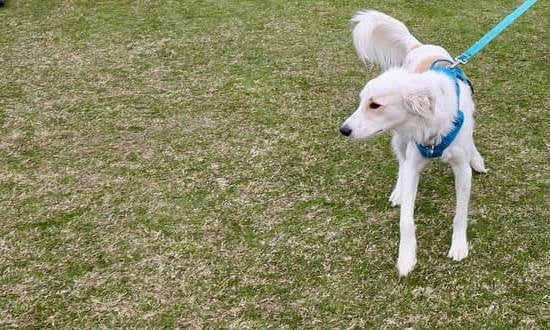When it comes to dog training, there are countless tools and methods available to help shape your furry friend into a well-behaved companion. One often-overlooked tool that can be incredibly effective is a whistle. Utilizing a whistle in your dog training routine can provide numerous benefits and enhance the training experience for both you and your canine companion.
The use of a whistle in dog training can be a powerful tool for several reasons. First and foremost, the sound of a whistle is distinct and easily recognizable to dogs, making it an excellent way to capture their attention and convey commands. Unlike verbal cues, which can sometimes get lost in the noise of everyday life or become muddled with emotion, the sound of a whistle cuts through the distractions and sends a clear signal to your dog.
Furthermore, whistle training offers several unique benefits that make it an effective choice for dog owners. Whistle commands are consistent and standardized, meaning that they can be easily understood by different trainers or handlers. This consistency promotes reliability in your dog’s response to commands, ensuring that they understand what is expected of them regardless of who is giving the command.
In addition, using a whistle allows you to have greater control over your dog at a distance. The sound of a well-designed dog training whistle carries farther than our voices alone, enabling you to give commands or recall your pup even when they are far away from you. This increased range can be particularly useful when teaching off-leash obedience or navigating high-distraction environments.
Overall, incorporating a whistle into your dog training repertoire can revolutionize the way you communicate with your four-legged companion. In the following sections, we will explore various aspects of whistle training, including different types of whistles available, essential techniques for effective training, advanced strategies for more complex commands, troubleshooting common challenges faced during whistle training, safety considerations, real-life applications of whistle training, and ultimately how to master this potent tool in dog obedience.
Get ready to embark on a journey of transformation and deeper understanding with your furry friend by your side.
Understanding the Basics
When it comes to whistle training for dogs, understanding the basics is essential. One of the first things to consider is the type of whistle that will be most suitable for your dog and your specific training needs. There are various types of dog training whistles available in the market, each with its own unique features and benefits.
Different Types of Whistles
One popular type of whistle used in dog training is the pea whistle. This type of whistle has a small ball, or “pea,” inside that moves back and forth when blown, creating a distinct sound. Pea whistles are known for their high-pitched and loud tone, making them ideal for outdoor training sessions or when you need to capture your dog’s attention even in noisy environments.
Another common option is the silent whistle. Unlike traditional whistles, silent whistles produce sounds at frequencies that are outside the range of human hearing. These whistles can be adjusted to different frequencies, allowing you to customize the sound based on your dog’s response. Silent whistles are particularly useful if you have neighbors who could be disturbed by loud noises or if you want to train your dog at a distance without attracting unwanted attention.
Factors to Consider
When choosing a whistle for dog training, there are several factors worth considering:
- Frequency: Different breeds and individual dogs may respond better to certain frequencies. It may require some trial and error to find the frequency that works best for your dog’s hearing.
- Range: The range of a whistle refers to how far its sound can carry. Consider how far away you typically need your dog to hear the whistle during training sessions or outdoor activities.
- Durability: Look for a whistle made from durable materials that can withstand regular use and potential drops or accidents during training sessions.
By taking these factors into account, you can choose a whistle that suits both your needs as a trainer and your dog’s responsiveness.
Overall, understanding the different types of whistles available and their unique features allows you to make an informed decision on which whistle will be most effective for your dog training purposes. Whether you opt for a pea whistle or a silent whistle, selecting the right tool is an important step towards successful whistle training.
Essential Whistle Training Techniques for Effective Dog Training
Whistle training is an effective and powerful tool for dog training. When used correctly, a whistle can provide clear communication and improve obedience in dogs. This section will guide you through the essential whistle training techniques that will help you achieve effective dog training.
To start with whistle training, it is important to introduce the whistle to your dog in a positive and gradual manner. Begin by associating the sound of the whistle with something rewarding, such as treats or praise. Blow the whistle softly at first, then gradually increase the volume as your dog becomes more comfortable with the sound. This process helps create a positive association between the whistle and rewards, motivating your dog to respond to its sound.
Desensitizing your dog to the whistle sound is also crucial for successful training. Dogs naturally have sharper hearing than humans, so it’s important to gradually expose them to louder sounds without overwhelming them. Gradually increase the volume of the whistle over time while continuing to reward your dog for their positive response. Consistency and patience are key during this phase of training.
Once your dog has become accustomed to the sound of the whistle, you can start using it for basic commands like recall, sit, and stop. One common technique is to assign different commands to specific variations of whistle blows. For example, one short blast can mean “sit,” while two short blasts can mean “recall.” Consistency in command structure is important for clarity in communication with your dog.
Using whistle commands instead of vocal commands offers several advantages in dog training. Whistle sounds tend to carry further distances than human voices, making them ideal for outdoor or off-leash activities. Whistles also produce consistent sounds each time they are blown, reducing variability in tone or pitch that may confuse dogs when vocal commands are given.
Incorporating these essential techniques into your dog’s training routine will lay a strong foundation for effective communication between you and your pet using a whistle. Remember to be patient and consistent, rewarding your dog for their positive response to the whistle sound. With practice, you will see improvement in obedience and control over time.
| Technique | Description |
|---|---|
| Introduction of Whistle | Gradually introduce the whistle sound to your dog, associating it with rewards |
| Desensitizing to Whistle Sound | Gradually expose your dog to louder whistle sounds without overwhelming them |
| Assigning Commands to Whistle Blasts | Create a consistent command structure by assigning specific whistle blasts for different commands |
Establishing Communication
Using whistle commands in dog training can be a highly effective way to establish clear communication with your furry friend. Whistle commands are not only reliable, but also offer several advantages over vocal commands. In this section, we will break down common whistle commands for different training purposes and explain why whistle commands can be more reliable than vocal commands.
One of the most basic and essential whistle commands is the recall command, which is used to call your dog back to you. The recall command is particularly important for off-leash control and ensuring your dog’s safety. To train your dog to respond to the recall command, start by choosing a unique sound pattern on your whistle that your dog can easily distinguish from background noises.
Another useful whistle command is the sit command, which can help teach your dog impulse control and obedience. To introduce the sit command using a whistle, begin by associating the sound of the whistle with the action of sitting through positive reinforcement. For example, whenever you blow the whistle and your dog sits down, reward them with praise or a treat.
The stop command is another valuable tool in training dogs for safety and controlling unwanted behaviors. The stop command teaches your dog to pause or freeze when they hear a specific signal from the whistle. It can be particularly helpful during activities such as walking or hiking off-leash where you need your dog to immediately stop their current behavior.
Using whistle commands offers several advantages compared to vocal commands. First, whistles produce distinct sounds that can cut through other background noises and distractions more effectively than human voices. This makes them especially useful in high-distraction environments or situations where verbal communication may not be possible.
Secondly, dogs tend to respond better to consistent and unique sounds rather than variations in tone or pitch in human voices. Whistle commands provide consistent sound cues that are easy for dogs to recognize and understand consistently.
| Whistle Command | Purpose |
|---|---|
| Recall Command | To call your dog back to you, ensuring off-leash control and safety. |
| Sit Command | To teach impulse control and obedience by training your dog to sit on command. |
| Stop Command | To immediately halt your dog’s current behavior for safety or unwanted behaviors. |
Advanced Whistle Training
Once you have established a basic foundation with whistle training, you can take your dog’s training to the next level by incorporating advanced whistle techniques. These techniques are useful for teaching more complex commands and tricks, as well as improving off-leash control and reliability in high-distraction environments.
Introducing Advanced Commands
With your dog already familiar with basic whistle commands, you can begin introducing more advanced commands. These commands can include tasks such as directional cues, retrieving objects, or navigation through obstacles. It is important to break down these commands into smaller steps and use positive reinforcement to gradually shape your dog’s behavior towards the desired outcome.
For example, if you want to teach your dog a directional cue using the whistle, start by having them follow a target stick or an object like a cone that you point at using the whistle cue. Gradually fade out the use of the target stick or cone and continue reinforcing their response to only the whistle cue. With consistency and patience, your dog will be able to respond to more advanced commands using just the whistle signal.
Incorporating Variable Frequencies and Patterns
To enhance your dog’s ability to differentiate between different whistling cues, you can introduce variations in frequency and patterns. You can assign specific frequencies or patterns for different commands or behaviors.
For instance, a short burst of high-pitched frequency might indicate “sit,” while a long steady tone could mean “lie down.” By consistently associating different frequencies or patterns with specific cues during training sessions, your dog will learn to recognize and respond to each command accordingly.
Proofing Commands in High-Distraction Environments
One of the advantages of whistle training is its reliability even in busy or distracting environments. To ensure that your dog remains responsive even in high-distraction settings, it is crucial to gradually expose them to increasingly challenging environments while reinforcing their training.
Start by practicing in a moderately distracting area, such as a park with some activity. Gradually escalate the level of distractions by introducing other dogs, people, or even toys. With each step, reinforce your dog’s response to the whistle commands and gradually decrease the amount of reinforcement needed.
Using rewards such as treats or playtime when your dog responds correctly will help solidify their understanding of the command and maintain their focus on you. Consistency and continued practice in various real-life situations will strengthen your dog’s ability to follow whistle commands reliably.
By incorporating advanced whistle training techniques into your dog’s training routine, you can enhance their obedience skills, responsiveness, and overall connection with you as a handler. Remember to always be patient and use positive reinforcement during the training process. With time and dedication, both you and your furry companion can achieve impressive results through advanced whistle training.
Troubleshooting
Whistle training can be a highly effective tool in dog training, but it is not without its challenges. In this section, we will address common problems and challenges that may arise during whistle training and provide tips for troubleshooting these issues.
One common challenge faced during whistle training is non-response from the dog. If your dog is not responding to the whistle commands, it could be due to a couple of reasons. Firstly, ensure that your dog has been properly introduced to the whistle and understands its meaning.
If not, you may need to go back to the basics and gradually introduce the whistle in a positive and rewarding manner. Secondly, check if there are any distractions in the environment that may be diverting your dog’s attention. Consider practicing in a quiet and controlled environment initially before gradually increasing distractions.
Another challenge that some dogs may face is fear or aversion towards the sound of the whistle. This can happen if they have had negative experiences associated with loud sounds in the past or if they have not been desensitized to the whistle properly.
To help overcome this, start by using a low-intensity whistle sound and gradually increase the volume over time as your dog becomes more comfortable. Additionally, pair each use of the whistle with positive reinforcement such as treats or praise to create positive associations.
When troubleshooting challenges in whistle training, it is important to remain patient and consistent with your approach. Remember that each dog is unique and may respond differently to various techniques. If you are facing difficulty in overcoming specific challenges or if your dog’s behavior worsens during training, consider seeking guidance from a professional dog trainer who specializes in positive reinforcement methods.
By addressing common problems and challenges proactively, you can overcome obstacles in whistle training and make progress towards successful communication with your dog through whistling commands.
Safety First
When it comes to whistle training for dogs, safety should always be the top priority. It is important to ensure that your dog’s well-being is protected throughout the training process. By following guidelines and using positive reinforcement techniques, you can create a safe and effective whistle training experience for your furry companion.
To ensure safety during whistle training, here are some guidelines to keep in mind:
- Start Slowly: Introduce the whistle gradually to avoid overwhelming your dog. Begin by associating the sound of the whistle with positive experiences, such as treats or playtime.
- Use Positive Reinforcement: Reward your dog when they respond correctly to a whistle command. This will reinforce desired behaviors and motivate them to continue learning.
- Avoid Excessive Volume: Whistles can produce loud sounds that may startle or harm your dog’s ears. Start with low volume and gradually increase if needed, while monitoring your dog’s reaction.
- Monitor Body Language: Pay close attention to your dog’s body language during training sessions. Signs of discomfort, fear, or stress should be addressed immediately by taking a break or modifying the training approach.
In addition to these guidelines, it is crucial to utilize ethical training methods that prioritize the well-being of your dog:
- Avoid Punishment: Whistle training should focus on positive reinforcement rather than punishment. Harsh or punitive measures can damage the trust between you and your dog.
- Be Patient and Consistent: Training takes time and consistency. Avoid rushing through sessions and be patient with your dog’s progress. Consistency in commands and rewards will help them understand what is expected of them.
- Seek Professional Help if Needed: If you encounter challenges or feel overwhelmed during whistle training, consider consulting a professional dog trainer who specializes in positive reinforcement techniques. They can provide guidance and support to ensure both you and your dog have a positive experience.
By prioritizing safety and well-being, whistle training can become a rewarding experience for both you and your furry friend. Remember, the goal is to strengthen the bond with your dog while enhancing their obedience skills. With patience, consistency, and positive reinforcement, you can effectively incorporate whistle training into your dog’s routine while keeping them safe and happy.
Incorporating Whistle Training into Everyday Life
Whistle training is not simply limited to dog training sessions; it can be incorporated into everyday life to enhance communication and improve obedience in various situations. By integrating whistle commands into your dog’s training routine, you can achieve better control and responsiveness in real-life scenarios.
One common application of whistle training is during walks. Many dogs become easily distracted by their surroundings, making them prone to pulling on the leash or wandering off. By using a specific whistle command for recall, such as two short bursts, you can regain your dog’s attention and prevent them from engaging in undesirable behaviors. Consistently practicing this command during walks will help reinforce the association between the sound of the whistle and coming back to you.
Moreover, recall is not the only whistle command that can be beneficial in everyday situations. The “sit” command, signaled by one long burst of the whistle, can be particularly useful when encountering strangers or other dogs on walks. Teaching your dog to sit upon hearing this whistle command allows you to maintain control over their behavior and prevent any potential problems or conflicts.
In addition to walks, incorporating whistle training into mealtime routines can also yield positive results. Using a distinct whistle command as a cue for mealtime helps establish consistency and reinforces good behavior around food. This can be especially helpful for dogs who tend to become overly excited or aggressive during feeding times.
By utilizing different scenarios where effective communication is crucial, such as walks and mealtimes, you can enhance the overall obedience of your dog through whistle training. Remember that consistency and positive reinforcement are key when incorporating whistle commands into everyday life. With patience and practice, both you and your furry companion will reap the rewards of this powerful tool in dog training.
Conclusion
In conclusion, mastering the use of a whistle in dog training can be a powerful tool for achieving effective and reliable results. Throughout this article, we have explored the benefits and effectiveness of whistle training, understood the different types of whistles available, learned essential training techniques, established communication through whistle commands, delved into advanced whistle training, troubleshooted common challenges, prioritized safety and ethical training methods, and explored real-life applications of whistle training.
Using a whistle in dog training offers several advantages. It provides clear and consistent signals that dogs can easily understand, making it more reliable than vocal commands. Whistle commands can also enhance off-leash control and reliability in high-distraction environments. By following the step-by-step guide on introducing the whistle to your dog and creating positive associations with its sound, you can establish effective communication and achieve desired behaviors.
It is important to remember that safety and well-being should always be prioritized in dog training. Using positive reinforcement techniques and ethical methods ensures a healthy relationship between you and your furry companion. Incorporating whistle training into everyday life can enhance various aspects such as walks, recall responsiveness, and overall obedience.
Frequently Asked Questions
Is it good to train a dog with a whistle?
Training a dog with a whistle can be very effective and beneficial. Using a whistle can provide clear and consistent communication between the trainer and the dog. A whistle sound has a distinct and unique pitch that stands out from other environmental noises, which helps to capture the dog’s attention.
This makes it easier for the dog to understand what behavior is being reinforced or corrected during training sessions. Additionally, using a whistle allows for longer distances of communication compared to voice commands, making it especially useful in outdoor or large area training scenarios.
How do you use a dog whistle to train a dog?
To effectively use a dog whistle for training, the trainer needs to start by introducing the whistle sound to the dog in a positive manner. It’s important to associate the whistle sound with something pleasant for the dog, such as treats or praise. The trainer can blow the whistle while giving treats or affection so that the dog begins to understand that the sound means something positive is coming their way.
Once this association is established, the trainer can use different patterns of blowing on the whistle to signify specific commands or behaviors they want from the dog. Consistency and clarity are key in using a dog whistle for training, as it helps establish a strong connection between certain sounds and desired responses.
What is the purpose of using dog whistle by a trainer?
The purpose of using a dog whistle by a trainer is primarily to enhance communication with their canine companion during training sessions. A dog whistle produces sounds that are easily distinguishable from regular human vocalizations, allowing trainers to give more precise commands without confusion or ambiguity for the dogs. The ability of dogs to hear higher frequencies than humans enables them to pick up on these whistle sounds even from far distances or amidst noisy environments.
This makes it particularly helpful when training dogs for activities like hunting, herding, search and rescue, or other tasks where clear and immediate signals are crucial for success and safety. By employing a consistent sound with different variations, trainers can convey specific instructions effectively and efficiently, resulting in better-trained dogs who understand their handler’s expectations.

Welcome to the blog! I am a professional dog trainer and have been working with dogs for many years. In this blog, I will be discussing various topics related to dog training, including tips, tricks, and advice. I hope you find this information helpful and informative. Thanks for reading!





